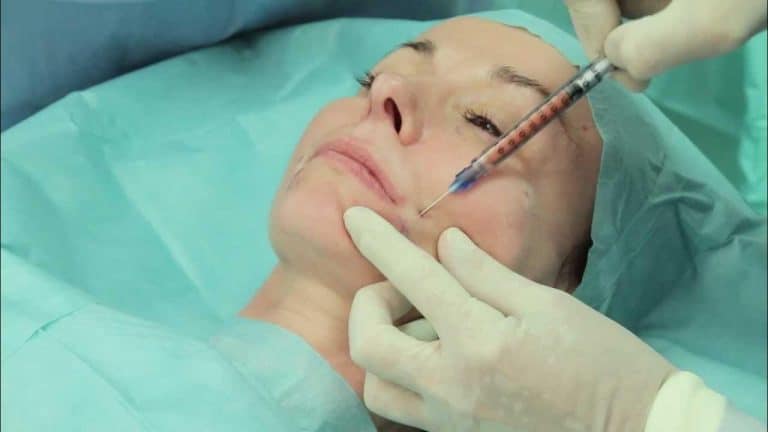Exploring the Latest Innovations in Abdominoplasty Surgery Techniques
Introduction
Abdominoplasty, commonly known as a tummy tuck, is a surgical procedure that removes excess fat and skin from the abdomen while tightening the underlying abdominal muscles. It is often used to improve the appearance of the midsection for those who have lost a significant amount of weight or have experienced pregnancy-related changes to their body. The latest innovations in abdominoplasty surgery techniques are designed to improve patient comfort and safety, reduce recovery time and minimize potential risks and side effects.
At New York Liposuction Center, our board-certified plastic surgeon Dr. Arnold Breitbart specializes in a variety of advanced abdominoplasty techniques. In this blog post, we will explore the different types of abdominoplasty surgeries available and discuss their benefits, risks, and potential side effects. We hope this information will help you make an informed decision about whether this procedure is right for you.
Types of Abdominoplasty Surgery Techniques
Abdominoplasty, commonly known as a tummy tuck, is a surgical procedure that removes excess skin and fat from the abdomen while tightening the underlying muscles. The latest innovations in abdominoplasty surgery techniques have enabled surgeons to provide their patients with more natural-looking results while minimizing risks and side effects. In this blog post, we will explore some of the most common types of abdominoplasty surgery techniques.
Traditional Abdominoplasty
traditional abdominoplasty is the most common type of abdominoplasty surgery technique. It involves making an incision along the lower abdomen, from hipbone to hipbone. The surgeon then separates the skin from the abdominal wall and tightens the underlying muscles before removing any excess skin or fat. This type of abdominoplasty can be used to treat both sagging skin and loose abdominal muscles caused by pregnancy or weight loss.
Mini-Abdominoplasty
Mini-abdominoplasty is a less invasive version of traditional abdominoplasty. It involves making a smaller incision, usually just above the pubic area, and does not require separating the skin from the abdominal wall. Instead, only a portion of the lower abdominal skin is removed and underlying muscles are tightened. This type of abdominoplasty is best suited for those who only need minimal correction in their abdominal area.
Extended Abdominoplasty
Extended abdominoplasty is similar to traditional abdominoplasty but requires an additional incision around the sides of the waistline. This type of procedure is typically used for those who have more severe cases of sagging skin or loose abdominal muscles due to pregnancy or significant weight loss. During an extended abdominoplasty, excess skin and fat are removed from both the upper and lower abdomen as well as the flanks (sides).
Endoscopic Abdominoplasty
Endoscopic abdominoplasty is a minimally invasive procedure that uses small incisions and an endoscope (a thin tube with a camera attached) to access and remove excess fat and skin from inside the abdomen without having to make large external incisions like traditional or mini-abdominoplasties do. Endoscopic abdominoplasties are typically performed on individuals who only need minimal correction in their abdominal area but may also be used in combination with other types of procedures such as liposuction or breast augmentation.
High Lateral Tension Abdominoplasty
High lateral tension abdominoplasties involve making an incision along both sides of the waistline instead of just one side like traditional or extended abdominopplasties do. This type of procedure helps to reduce sagging skin on both sides of your body while also providing improved contouring results compared to traditional methods. High lateral tension abdominopplasticy may be recommended for those who have lost a significant amount of weight or had multiple pregnancies resulting in stretched out/loose abdominal muscles on both sides of their body.
Circumferential Abdominopplasticy
Circumferential abdminopplasticy combines two different types of procedures: tummy tuck (traditional/mini) and belt lipectomy (also known as circumferential body lift). During this procedure, an incision is made around your entire midsection which allows for removal of excess fat and skin from your stomach, flanks (sides), back, hips, thighs, buttocks, etc., creating a smoother contour all around your body instead just in one specific area like traditional/mini tummy tucks do. This type of procedure may be recommended for those who have undergone massive weight loss resulting in significant amounts of loose skin all over their body instead just in one specific area like traditional/mini tummy tucks do.
Liposuction-Assisted Abdominopplasticy
Liposuction-assisted abdminopplasticy combines two different types procedures: liposuction and tummy tuck (traditional/mini). During this procedure, liposuction is used to remove excess fat while a tummy tuck (traditional/mini) is used to remove excess skin and tighten underlying muscles in order to create smoother contours all around your body instead just in one specific area like traditional/mini tummy tucks do.This type of procedure may be recommended for those who have lost a significant amount weight but still have stubborn pockets fat that cannot be removed through diet exercise alone.
| Traditional Abdominoplasty | Involves making an incision along the lower abdomen, from hipbone to hipbone |
| Mini-Abdominoplasty | Involves making a smaller incision, usually just above the pubic area |
| Extended Abdominoplasty | Involves an additional incision around the sides of the waistline |
| endoscopic abdominoplasty | Uses small incisions and an endoscope to access and remove fat and skin |
| high lateral tension abdominoplasty | Involves making an incision along both sides of the waistline |
| Circumferential Abdominopplasticy | Combines tummy tuck and belt lipectomy, with an incision around entire midsection |
| Liposuction-Assisted Abdominopplasticy | Combines liposuction and tummy tuck to remove excess fat and skin |
Benefits of the Latest Innovations in Abdominoplasty Surgery Techniques
Abdominoplasty, commonly known as a “tummy tuck,” is a surgical procedure that removes excess skin and fat from the abdomen while tightening the underlying muscles. This type of surgery is often sought by individuals who have lost significant amounts of weight, or those who have had multiple pregnancies or are experiencing sagging skin due to aging. The latest innovations in abdominoplasty surgery techniques offer many benefits, including improved patient comfort and safety, shorter recovery times, fewer complications, and more natural results.
Improved Patient Comfort and Safety
The latest innovations in abdominoplasty surgery techniques provide improved patient comfort and safety. Some of these advances include the use of smaller incisions, which help reduce scarring; the use of laparoscopic tools for better visualization; and the use of lasers for precise cutting. These advances also allow surgeons to perform minimally invasive procedures with less risk of infection or other complications. Additionally, some new techniques involve using dissolvable sutures that do not need to be removed after surgery.
Shorter Recovery Time and Fewer Complications
The latest innovations in abdominoplasty surgery techniques also lead to shorter recovery times and fewer complications. This is because many of these procedures are performed under local anesthesia instead of general anesthesia, which can reduce postoperative pain and discomfort. Additionally, newer techniques involve less tissue manipulation than traditional methods, which helps to reduce inflammation and healing time. Furthermore, some new techniques involve using a tissue-expanding device to stretch the abdominal skin before removing it during surgery, allowing for fewer incisions and a quicker recovery time.
More Natural Results
Finally, the latest innovations in abdominoplasty surgery techniques also lead to more natural results. Many newer techniques involve repositioning rather than removing excess skin and fat from the abdomen. This allows for a smoother contour with less visible scarring than traditional methods. Additionally, some newer techniques involve reshaping the abdominal muscles rather than just removing excess skin and fat. This helps create an even tighter appearance that looks more natural than traditional methods.
Overall, the latest innovations in abdominoplasty surgery techniques offer many benefits for patients seeking this type of procedure. By providing improved patient comfort and safety, shorter recovery times, fewer complications, and more natural results, these advances can help make abdominoplasty an even more attractive option for those looking to achieve their desired outcome from this type of surgery.
Latest innovations in abdominoplasty offer
improved comfort, safety, shorter recovery times, fewer complications and more natural results.
Potential Risks and Side Effects Associated with Abdominoplasty Surgery
Abdominoplasty surgery is a major procedure that carries some risks and potential side effects, as with any surgery. It is important for patients to understand the potential risks and side effects associated with abdominoplasty surgery before deciding to undergo the procedure. While the risks of complications are low, it is important to be aware of them so that patients can make an informed decision.
Bleeding, Infection, and Blood Clots
One of the most common risks associated with abdominoplasty surgery is bleeding, infection, and blood clots. Bleeding can occur during or after the procedure due to trauma or injury to the abdominal wall or other organs during surgery. Infection can occur if bacteria enter the surgical wound or if there is inadequate sterilization of instruments used during surgery. Blood clots can form in veins deep within the abdomen due to decreased circulation caused by swelling or other factors during or after surgery. These clots can cause serious medical problems if they move through the bloodstream and become lodged in another area of the body such as the lungs.
Numbness, Sensitivity, or Loss of Skin
Another risk associated with abdominoplasty surgery is numbness, sensitivity, or loss of skin in the treated area due to damage to nerves and tissue during surgery. This can occur when too much skin is removed from one area or when incisions are made too close to nerve endings in the abdominal wall. In some cases, this numbness may be temporary; however, it may also be permanent depending on how extensive the nerve damage was during surgery. Additionally, some patients may experience sensitivity in their abdominal area due to scarring caused by incisions made during abdominoplasty surgery.
In conclusion, while there are many benefits associated with abdominoplasty surgery techniques such as improved patient comfort and safety, shorter recovery time and fewer complications, and more natural results; it is important for patients to understand that there are potential risks and side effects associated with this procedure as well including bleeding, infection, blood clots, numbness, sensitivity, and loss of skin in the treated area due to damage to nerves and tissue during surgery. Therefore it is essential for patients considering undergoing this procedure to consult their physician beforehand in order to ensure that they fully understand all of the potential risks involved before making a decision about whether or not abdominoplasty surgery is right for them.
Conclusion
At the New York Liposuction Center, we understand that abdominoplasty surgery is a major decision and one that should not be taken lightly. The latest innovations in abdominoplasty surgery techniques have improved patient comfort and safety while also providing more natural results with shorter recovery times and fewer complications.
Summary of the Latest Innovations in Abdominoplasty Surgery Techniques
The latest innovations in abdominoplasty surgery techniques include traditional abdominoplasty, mini-abdominoplasty, extended abdominoplasty, endoscopic abdominoplasty, high lateral tension abdominoplasty, circumferential abdominoplasty, and liposuction-assisted abdominoplasty. Each type of technique has its own benefits and potential risks associated with it.
Benefits and Potential Risks Associated with this Procedure
The potential benefits of these latest innovations include improved patient comfort and safety as well as shorter recovery times and fewer complications than before. However, there are still potential risks associated with any surgical procedure such as bleeding, infection, blood clots, numbness, sensitivity or loss of skin.
At the New York Liposuction Center, our board-certified plastic surgeon Dr. Arnold Breitbart will discuss all your options with you so you can make an informed decision about whether or not this procedure is right for you. We are committed to providing our patients with the highest quality care possible so they can achieve their desired goals safely and effectively. If you have any questions or would like to schedule a consultation at either our Park Avenue or Manhasset location please do not hesitate to contact us today!






